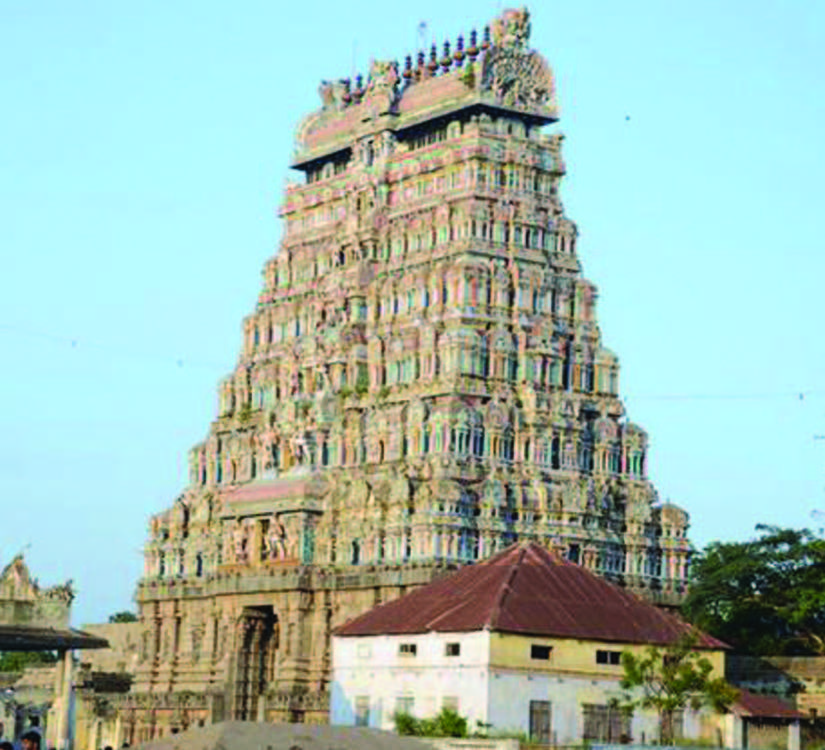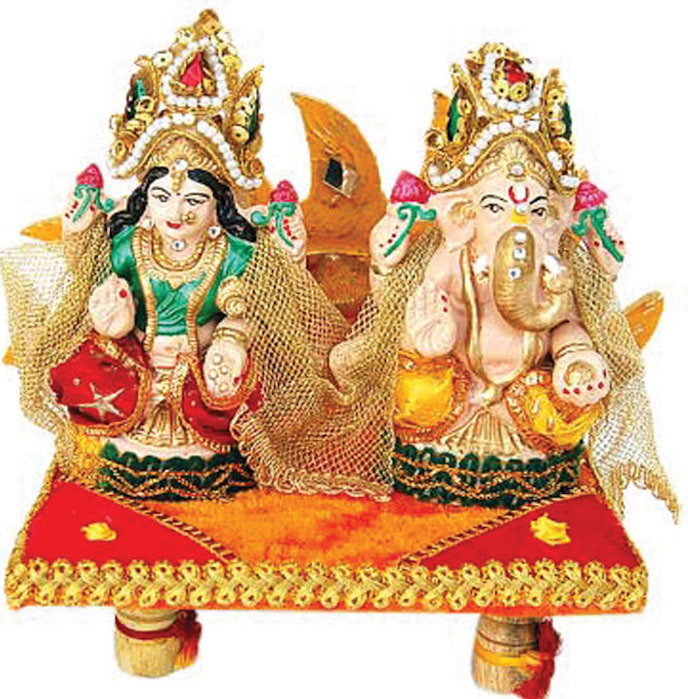
Ananda Natam Aaduvar…’ the subject of this song heard often on stage is the presiding deity of the Chidambaram temple, which is now under renovation, after 28 years. ‘Temple,’ for a worshipper of Siva, is this abode of Sivakamasundari Samedha Sri Nataraja.
It is Akasa (ether) kshetra among the five Siva temples (Pancha Bhoota) and also mukti (salvation) sthalam. It is unique that the big toe of the lifted foot of Sri Nataraja is on the central point of the Equator. If the world maap is perceived as a human being (Viratpurusha), India is located in the heart. Tamil Nadu is situated in the heart of the country and Chidambaram is in the heart of the State.
The proliferation of Thillai trees (Exocoeria agallocha) gave the place its name. It is also the sthala vriksham of the temple. To go back to the beginning, ‘Ananda Natam…,’ the hermits in Dharuka Vana were overcome with pride over the fact that they had Siva under their control. Deciding to teach them a lesson, Siva as a young mendicant accompanied by his beautiful wife (Vishnu as Mohini) went into the forests. The wives of the sages were enchanted by the radiance of the young sanyasin and the husbands were impressed by the woman.
The illusion soon lifted and they decided to kill the mendicant. The snakes they created became Siva’s ornaments, the tiger was killed and the skin adorned His waist. Muyalagan, the demon was subdued and with one foot holding him in place Siva danced in gay abandon, the Ananda Thandava.
The story of Nandanar is associated with Chidambaram, immortalised by many compositions describing his devotion to the deity of that temple, his plight and how the bull moved to help Nandanar have a good view of his favourite deity. This is where Patanjali and Vyakrapadar got to see the Ananda Thandava of Siva.
This is where Tirumurai was given to humanity. The primary four Saiva saints have sung in praise of Sri Nataraja and this is where they attained mukti too. Chidambaram in fact is the first among the Siva shrines the four have sung on (Paadal Petra Sthalam). Tiruvachagam, Manickavachagar’s outpouring of devotion, was found on the steps of Chitsabha with the signature of Nataraja as Tiruchitrambalathan. It was here that Sekkizhar started his ‘Periya Puranam’ with the Cosmic deity Himself providing the first word, ‘Ulagellam.’
Ramalinga Vallalar, who spent the better part of his life here, has sung many songs. Arunagirinathar, Pattinathar and Kalamegapulavar are among the others who dedicated songs to Sri Nataraja, with Arunagiri leading with 65.
Thooya Ponninal Ezhudi Veynda Ambalam (roof made of pure gold) – this is how Appar describes the shrine. The golden leaves have the mantra Namasivaya inscribed. Muthuthandavar, whose songs are widely sung and to which dancers perform had the blessings of Chidambaram Nataraja. Legend goes that while returning to Thillai from Sirkazhi, he found the Kollidam in spate. Paying heed to his anguished cry, the river parted, creating a path. Muthuthandavar is said to have merged with the golden flame that appeared in Kanakasabha even as devotees were watching.
Poet Kambar, after inaugurating the Ramayanam, went to Chidambaram to present the epic in the presence of the 3,000 Dikshitars, referred to as Moovayiravar. After initial difficulties, he achieved his mission in the 1,000-pillar hall of the temple.
The four majestic Rajagopurams are said to represent the four Vedas. They also are dedicated to the four saints, each of whom chose to enter the temple from his preferred direction. Cholas, Pandyas and the Nayaks have contributed to the architectural splendour of this 1,500-year old temple, which is a treasure trove of inscriptions.
The mystery lies behind the screen on the right side of the Nataraja shrine. When the veil lifts for a second, the dazzling garland of golden vilva leaves is revealed. The philosophy is Sri Nataraja is in three forms –discernible image – Sri Nataraja, mystic form – vilva – and representative image –crystal linga. Real joy or ecstasy (Ananda) is hidden by illusion (veil) and when that falls, illumination (wisdom) is obtained. The place, therefore is called Pranava Peetam.
The temple follows rituals as stated in the Vedas. Legend goes that Siva himself led 3,000 Vedic scholars (Dikshitars) to Thillai. With Him as the Guru, the dikshitars performed the pujas, their number now around 400.





Be the first to comment